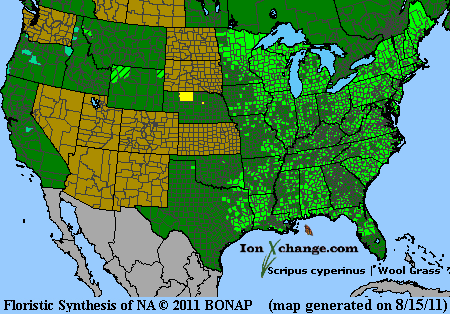 Loading... Please wait...
Loading... Please wait...- Home
- SEEDS
- SEED MIXES
- BUY PLANTS
- Info Request
-
Educational Videos
- Greenhouse Transplanting Demonstration
- Native Seed Cleaning demonstration at Ion Exchange Native Seed and Plant Nursery
- Attracting Butterflies
- Bidens - Bidens cernua Harvest Video
- Big Blue Stem Harvest
- Butterfly Milkweed Video
- Button Blazingstar - Liatris aspera Video
- Buttonbush - Cephalanthus occidentalis Video
- Canada Anemone - Anemone canadensis Harvest Video
- Cardinal Flower - Lobelia cardinalis Video
- Control Burn - Wildflower Field
- Cream Gentian - Gentiana flavida
- Culver's Root - Veronicastrum virginicum Video
- Cup Plant - Silphium perfoliatum Video
- Dormant Seeding | Planting
- Earthyman's Favorite Wildflowers Video
- Eco-Friendly Golf Course Seed Mix
- Floating Islands
- Fringed Loosestrife - Lysimachia ciliata Video
- Giant Yellow Hyssop - Agastache nepetoides Video
- Indiangrass - Sorghastrum nutans Video
- Iowa Prairie Partner Program
- Leadplant - Amorpha canescens (Potted) Video
- Meadow Blazingstar - Liatris ligulistylis
- Midland Shooting Stars - Dodecatheon meadii Video
- Native Plant Nursery Field Irrigation Experiment
- Nodding Onion - Allium cernuum Video
- Ohio spiderwort - Tradescantia ohiensis Video
- Old Man's Beard - Clematis virginiana blooms Video
- Oxeye Sunflower - Heliopsis helianthoides Video
- Prairie Spiderwort - Tradescantia bracteata
- Purple Coneflower - Echinacea purpurea Video
- Rain Garden or Water Garden Video
- Rattlesnake Master - Eryngium yuccifolium Video
- Riverbank Stabilization - Wetland Plants
- Rose Mallow - Hibiscus militaris Video
- Rosinweed - Silphium integrifolium Video
- Royal Catchfly - Silene regia
- Showy Tick Trefoil - Desmodium canadense Video
- Sneezeweed - Helenium autumnale Video
- Swamp Betony - Pedicularis lanceolata Video
- Swamp Milkweed - Asclepias incarnata Video
- Sweet Blackeyed Susan - Rudbeckia subtomentosa Video
- Tall Coreopsis - Coreopsis tripteris Video
- Urban Butterfly Garden
- Wild Bergamot - Monarda fistulosa Video
- Wild Geranium - Geranium maculatum Harvest
- Wild Goldenglow - Rudbeckia lanciniata Video
- Wild Petunia - Ruellia humilis Harvest Video
- Woodland Knotweed - Polygonum virginianum Video
- Yellow Coneflower - Ratibida pinnata Video
- Blog
- Resources
- Policies
Contact Us
Phone:
563-419-0837
or 563-535-7231
Email:
hbright@ionXchange.com
Browse Products
Add to Wish List
You Recently Viewed...
Our Newsletter
Product Description
Wool Grass ( Scirpus Cyperinus) is a native perennial plant consists of a clump of low vegetative shoots, from which arises one or more flowering stalks about 3-5' tall. The stout culms of the these flowering stalks are unbranched, bluntly 3-angled or terete (round in cross-section), medium green, and glabrous. Each culm has 5-9 alternate leaves along its length. The blades of these leaves are up to
| Sun Exposure | Prairie |
| Soil Moisture | Wet, Wet Mesic |
| Bloom Time |
|
| Bloom Color | |
| Max Height | 5 feet |
| Wetland Code | OBL |
| Germ Code | C(60)or M, D |
| Seeds Per Ounce | 1,700,000 |
"This native perennial plant consists of a clump of low vegetative shoots, from which arises one or more flowering stalks about 3-5' tall. The stout culms of the these flowering stalks are unbranched, bluntly 3-angled or terete (round in cross-section), medium green, and glabrous. Each culm has 5-9 alternate leaves along its length. The blades of these leaves are up to ½"" (12 mm.) across and 2' long; they are ascending to widely spreading. Each blade is medium green, glabrous, and slightly indented along the middle of its length. The leaf sheaths are medium green, glabrous, and closed. The leaves of the low vegetative shoots are similar to the leaves of the flowering stalks, except the former are somewhat smaller than the latter and more evergreen.
"Each fertile culm terminates in a compound umbel of spikelets spanning about 4-6"" long and wide. This compound umbel has many drooping branchlets that are slender, glabrous, and green. The outer branchlets terminate in small clusters of 3-12 sessile (or nearly sessile) spikelets. Each ovoid spikelet is about 5-6 mm. long and 3 mm. across; it becomes reddish brown and woolly at maturity, consisting of a dense head of perfect florets, scales, and bristles. Each floral scale is about 2 mm. long, lanceolate to ovate, and brown-membranous; each floret has a tripartite style, 3 stamens, and a developing ovary. At the base of the compound umbel, there are 3 or more large leafy bracts. Underneath each branched division of this umbel, there often occurs much smaller brown bractlets. The blooming period occurs from late summer to early fall. The florets are wind-pollinated. Each fertile floret is replaced by a tiny achene less than 1 mm. long. This achene is pale brown, 3-angled, and pointed at both ends; it is surrounded by 6 long bristles that are reddish brown, curly, and persistent. It is the exerted bristles of the many achenes in the spikelets that provide them with their woolly appearance. The root system is fibrous and short-rhizomatous. Wool Grass often forms colonies of plants.
"The preference is full or partial sun, wet to moist conditions, and soil that is muddy, sandy, or gravelly. Shallow water is tolerated. The easiest way to start new plants is by division of the vegetative shoots.
Edible Uses: Unknown
Medicinal Uses: Unknown
Other Uses: "The stems are woven to make matting and ropes. The small rushes have been used in making woven mats and storage bags. The fruiting tops of the plant have been used as a resilient material for stuffing and making pillows."
Herbal Uses: Unknown











